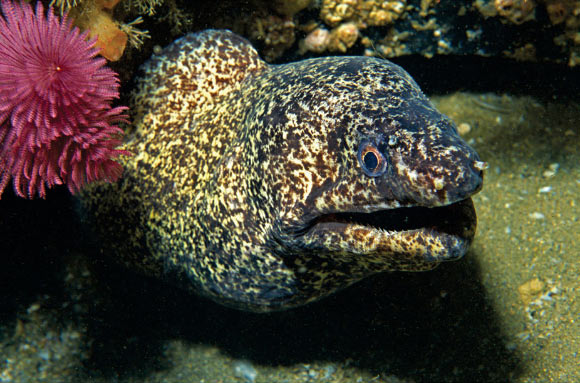A team of researchers from South Africa has discovered that the Indo-Pacific undulated moray eel (Gymnothorax undulatus), first described by the French naturalist Bernard Germain de Lacépède in 1803, is in fact two genetically and morphologically distinct species.
The moray eels are members of the family Muraenidae, one of the most diverse, abundant and widely distributed families of eels.
Muraenidae comprises two subfamilies, 16 genera and about 200 species, mostly distributed in tropical and temperate seas worldwide.
In the new study, Yonela Sithole of Rhodes University and the South African Institute for Aquatic Biodiversity and colleagues revised the taxonomic status of the undulated eel, a representative of the largest genus of the Muraenidae family.
“Gymnothorax undulatus is one of the most common tropical, reef-associated species in the Indo-Pacific region and occurs at depths to 36 m,” the researchers wrote in a paper in the journal Zootaxa.
“The color pattern of the species on the body typically varies from light to dark brown with diffuse vertical bars, with or without irregular brown rectangular spots, separated by a narrow pale reticulum.”
The scientists examined around 100 specimens of eels originally identified as Gymnothorax undulatus from the Western Indian Ocean.
“Moray eel species are mainly differentiated on color pattern, differences in dentition and vertebral counts,” they explained.
“Revision of widely-distributed species often results in description of new species.”
“In this study, morphological and genetic analyses indicated that Gymnothorax undulatus contains more than one species.”
Named Gymnothorax elaineheemstrae, the new species can be found along the coast of South Africa from KwaZulu-Natal to the Eastern Cape.
“Gymnothorax elaineheemstrae can be differentiated from other species within the genus in the Western Indian Ocean by its color pattern and vertebral count,” the study authors wrote in the paper.
“It has 134-136 total vertebrae and a mottled and faintly reticulated pattern, whereas Gymnothorax undulatus has irregular rectangular blotches separated by large reticulations.”
_____
Yonela Sithole et al. 2020. A taxonomic revision of Gymnothorax undulatus (Anguilliformes: Muraenidae) in the Western Indian Ocean, with description of a new species. Zootaxa 4767 (1): 161-181; doi: 10.11646/zootaxa.4767.1.7








